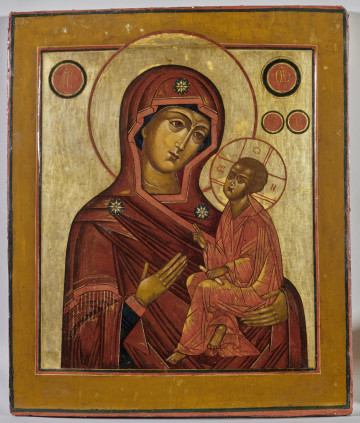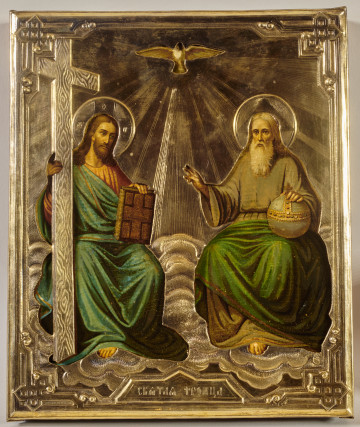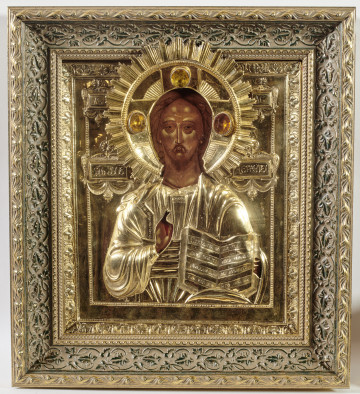
The Mother of God Odigitria [The Mother of God Odigitria of Tikhvin]
2nd half of the 19th century
Castle Museum in Łańcut
Part of the collection: German coins
The 13th-15th centuries were a period of economic transformation in Europe, abandoning the natural economy and attempting to transform towards a regular trade based on money. The rapidly developing trade needed new kinds of coins, as the money in circulation was not adjusted to the growing requirements of the economic life. Gold coins – florins – also started to appear, originating from Italy, and quickly adopted in almost all of Europe. The German equivalent of the florin was minted since the mid-13th century. It is the guilder, with inscriptions written in Gothic majuscule. If the issuer was an emperor, the obverse had the so called Reich Apple, local rulers often included escutcheons of their coats of arms. The reverses usually featured a religious motif – the figure of a patron saint or the Madonna and Child. Compositions of three or four coats of arms also sometimes occurred, especially in cases when the coins were minted at the initiative of several political entities. The most famous German guilders – the Rhine ones – were minted in the late 14th century. They contained less gold than the Florentine coin and gradually lost their value due to the regular reduction of the amount of gold in a single coin. By the mid-16th century they had only half the gold they had in the beginning. The presented guilder from the mid-15th century does not differ in weight from the first coins minted, and uses the same design. On the obverse, on a long cross, is the escutcheon of the coat of arms of the Palatinate, as well as an inscription: Louis, Palatine of the Rhine, Duke of Bavaria. The reverse bears the coats of arms of the archbishoprics of Mainz, Cologne and Trier, whose governors were the so-called sacral electors of the Reich, inscribed in a cloverleaf. The inscription informs that the guilder was minted in the town of Bacharach. The mass production of German guilders confirms the dynamic economic groof twth of the medieval Reich.
Mieszko Pawłowski
Other names
Goldgulden
Author / creator
Dimensions
cały obiekt: diameter: 22.7 mm
Object type
coin, money
Technique
minting
Material
gold
Creation time / dating
Creation / finding place
Owner
National Museum in Szczecin
Identification number
Location / status

2nd half of the 19th century
Castle Museum in Łańcut

XIX/XX wiek
Castle Museum in Łańcut

XIX century
Castle Museum in Łańcut
DISCOVER this TOPIC
Museum of King Jan III's Palace at Wilanów
DISCOVER this PATH
Educational path